OVERHEAD BRIDGE CRANES
Overhead bridge cranes are permanently installed cranes within a facility that are used to lift and move material from one location to another in a safe and efficient manner. The bridge crane provides lift coverage within its full dimensional envelope which typically prevents the need for multiple lifting devices or multiple transfers.
Overhead bridge cranes are typically designed and manufactured per application so that they can meet the exact needs of the user and fit within the facility’s dimensional parameters.
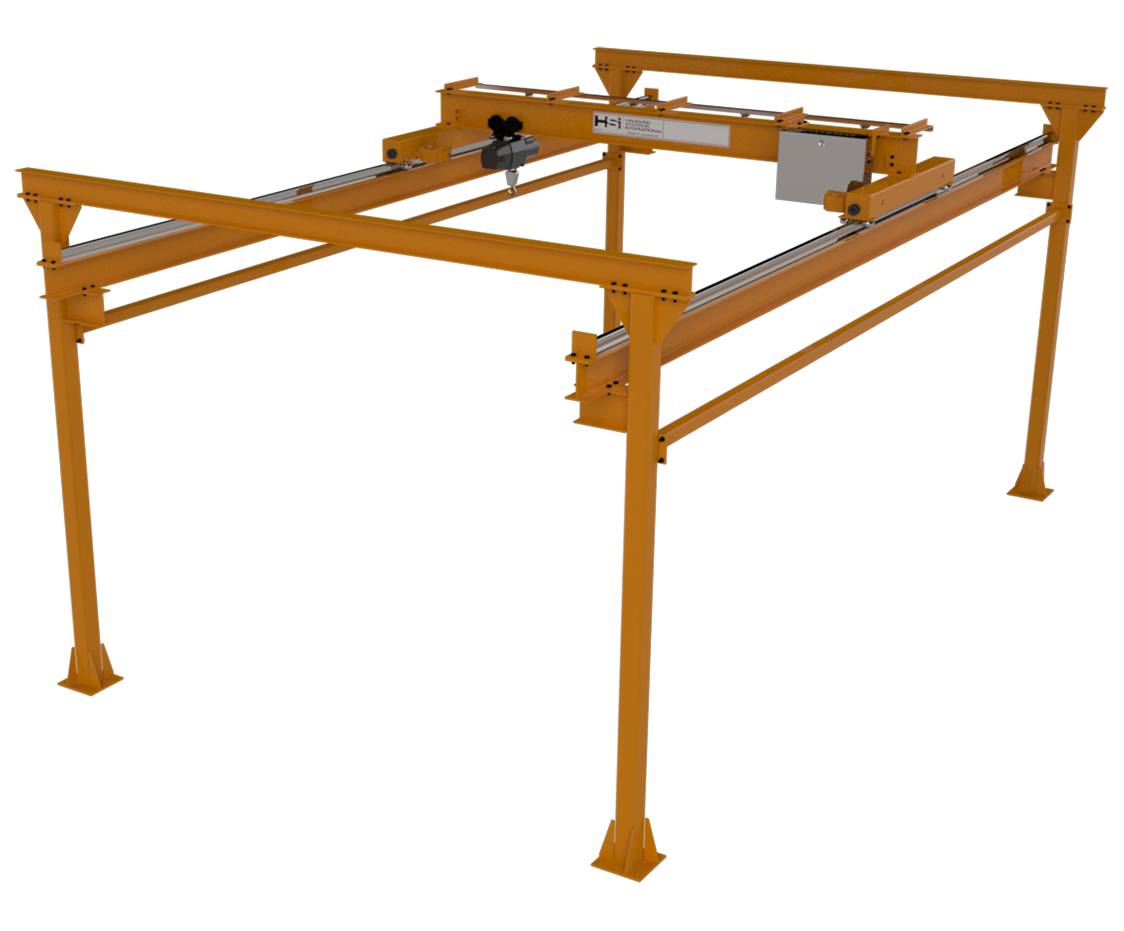
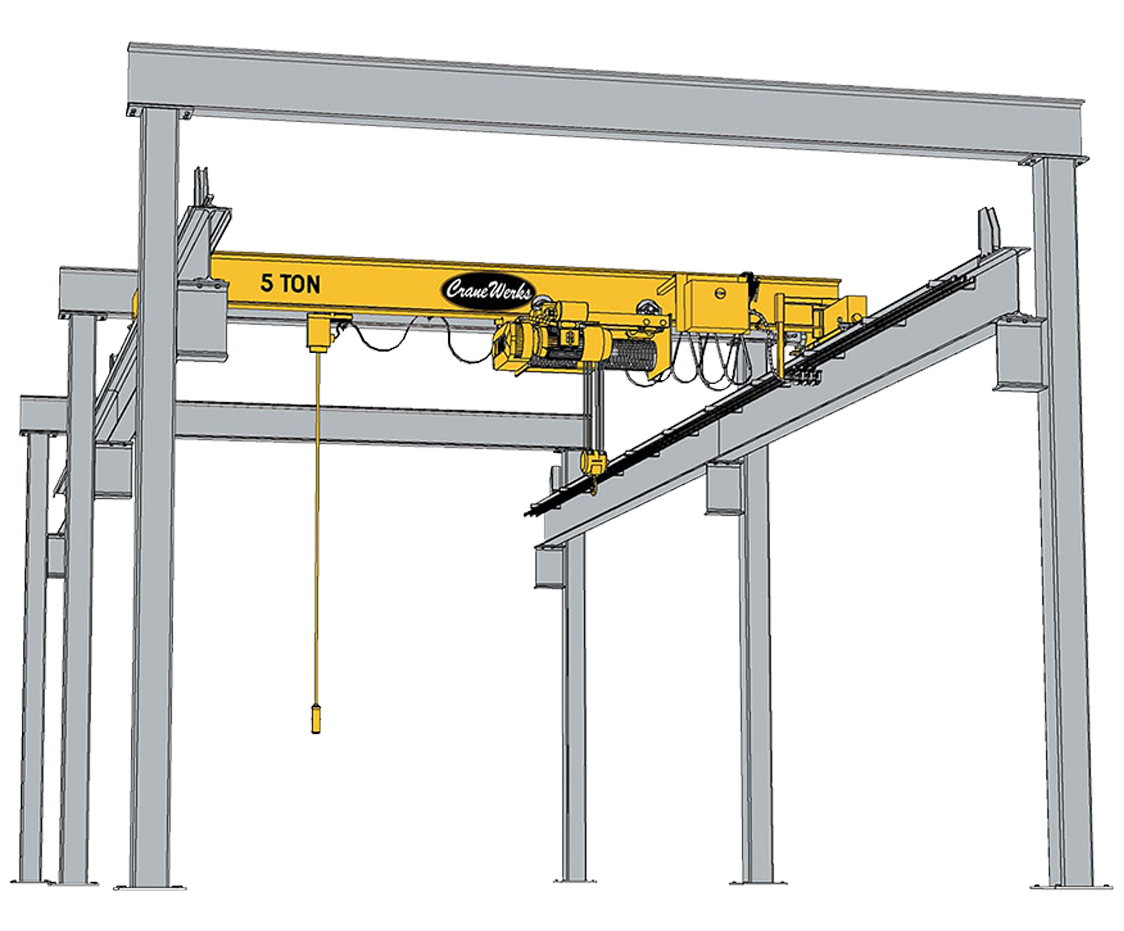
TOP RUNNING
- Capacities: ¼ ton to 20 ton+
- Sizes: Any width and length available
- Customized per application
Top Running Crane Runway systems are the workhorses of the overhead crane world. They
consistently, reliably handle heavy loads, day-in-and-day-out. The Top Running Runway
design affords maximum hook height.
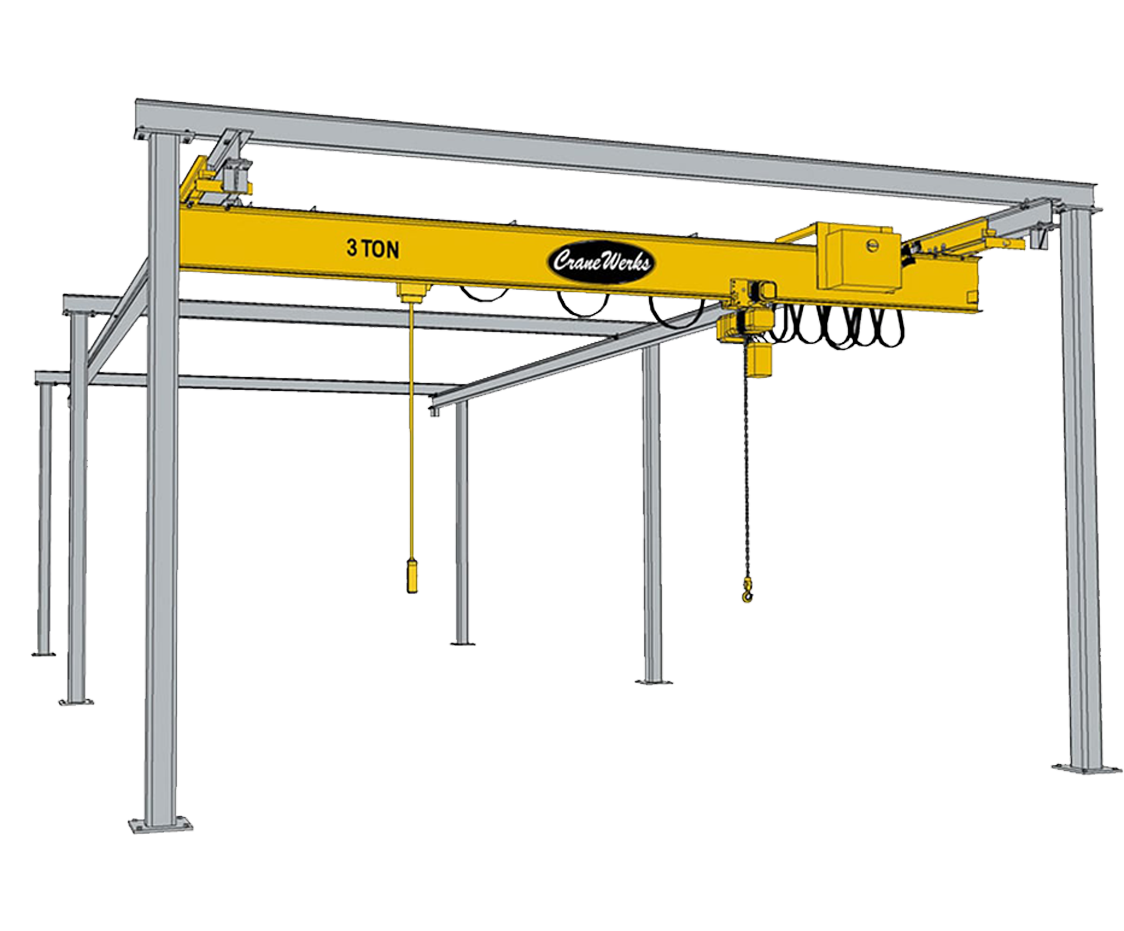
UNDERHUNG BRIDGE CRANE
- Capacities: ¼ ton to 20 ton+
- Sizes: Any width and length available
- Customized per application
Generally, a lot lighter than a top running system, underhung crane runways allow for more versatility and usability. Because they’re dramatically lighter, underhung runways can be ceiling-mounted. They also have the ability to run side-by-side without interfering with one another. Another mechanical advantage of underhung crane systems is their ability for multiple systems to be interlocked, enabling operators to transfer loads between them. They can also interlock with monorails, allowing for material transfer along a fixed path.
MOUNTING TYPES
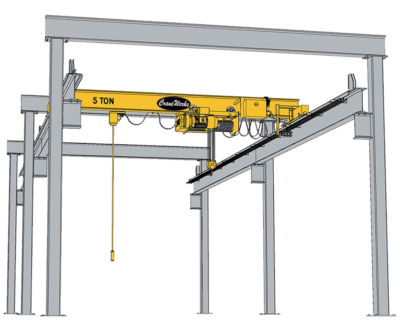
Header Braced
The runway is supported by the freestanding support columns, each pair tied together by a header. Header-braced systems are ideal when the lowest obstruction in the building is high enough that it does not limit the hook height. This runway type is easily expandable, and can handle multiple bridge crane systems
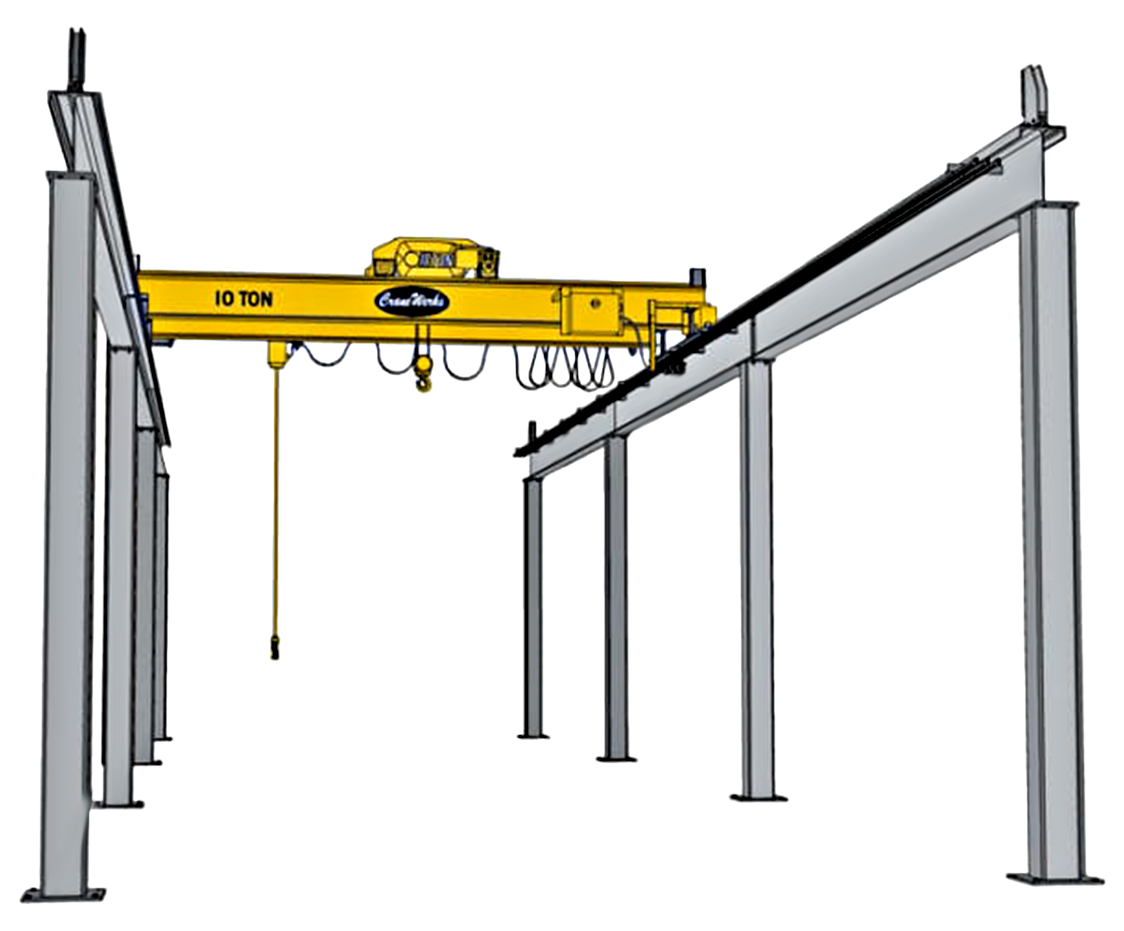
Freestanding
The Freestanding runway stands on its own – its design resists lateral and longitudinal forces unaided. Braces to other support structures simply aren’t necessary. This independence brings versatility: the system’s just as comfortable outdoors as indoors. The bridge crane runs on rails mounted to the top of the runway beams, maximizing the available hook height.
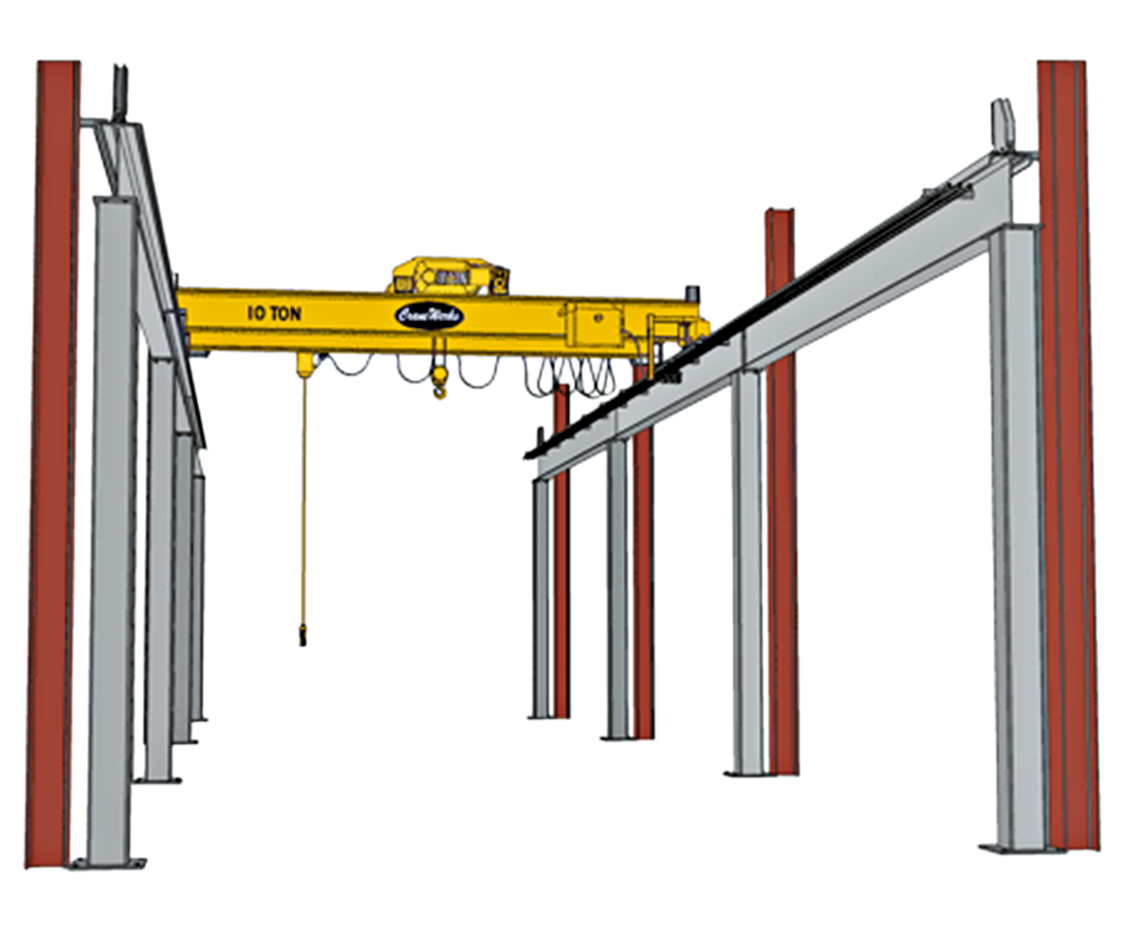
Semi-Freestanding
When a new or existing building has enough reserve capacity to resist the longitudinal (along the length of the crane runway) and lateral (across the width of the runway) forces, We can attach the columns and runways to these buildings, reducing the amount of steel required to produce an overhead crane system. This is also known as ‘Tie-Backs’ to the existing columns.
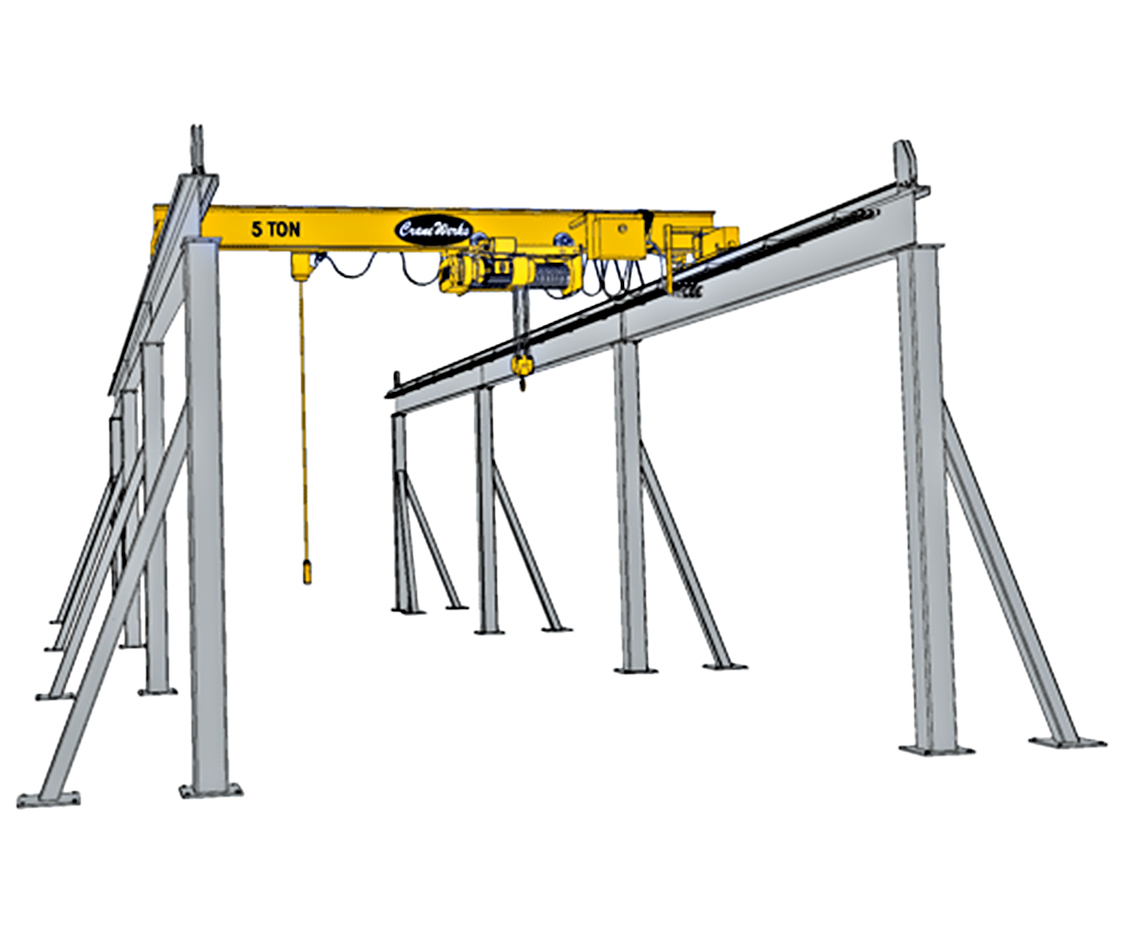
Kicker-Braced
Knee-braced crane runways have supports that mount directly to a 6 inch concrete slab or reinforced concrete footers. These low maintenance runway crane systems offer unbeatable hook height when ample floor space is available.
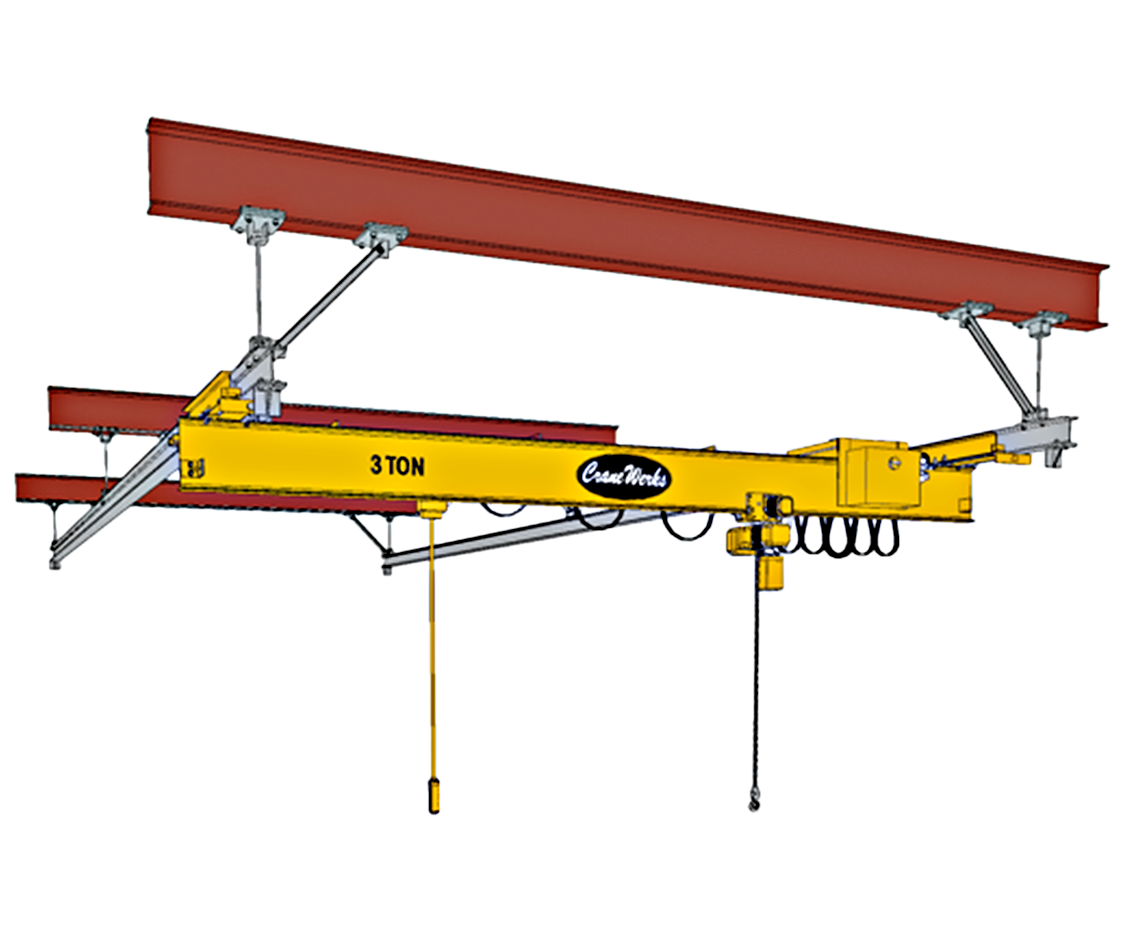
Ceiling Mounted
Underhung ceiling-mounted runways feature over head crane runways that attach directly to the ceiling or roof structure of a building. Ceiling-mounted, underhung systems are extremely versatile and can be used to easily transfer loads from one bay to another with the use of transfer switches. Underhung ceiling-mounted crane runways allow for utilization of entire floor space under the crane runway as well.

